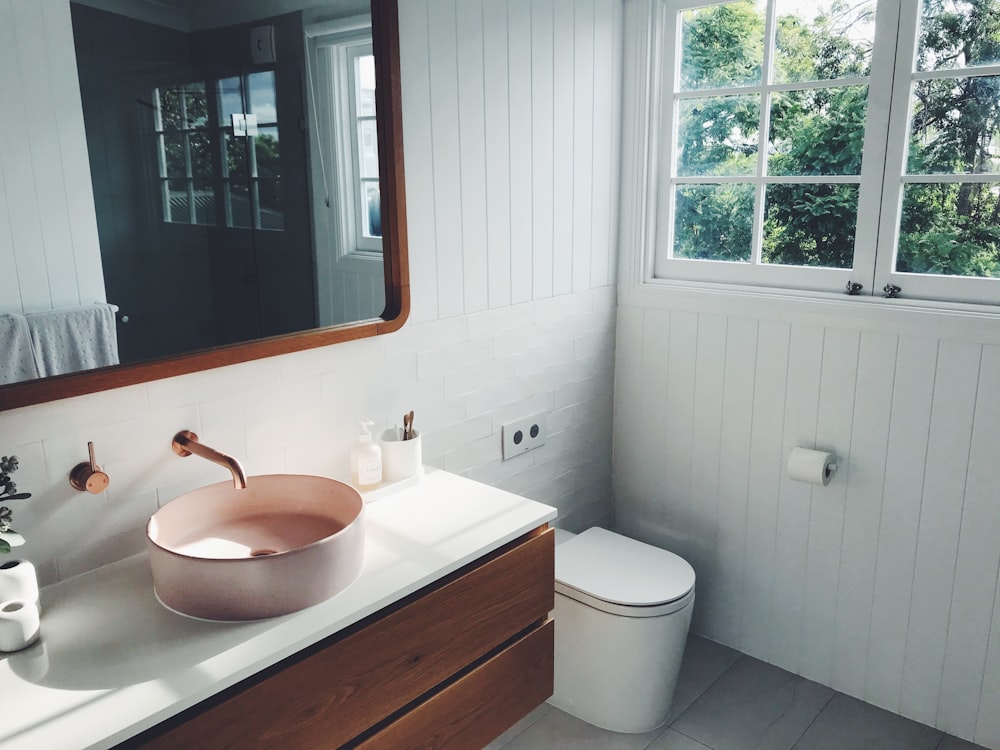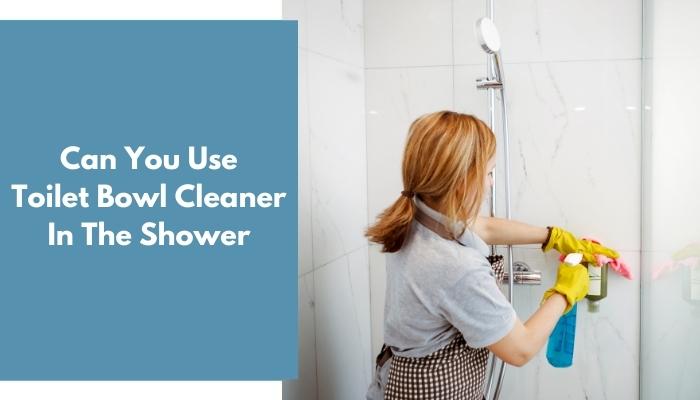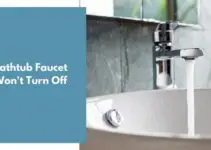Any homeowner will know how easy it is for your shower/ bathtub to form a build-up of dirt and grime, and sometimes it may seem like an easy substitute to use toilet bowl cleaner in the shower to eliminate the mess.
Some cleaners may even opt to use toilet bowl cleaner instead of a product designed for sink and bathtub cleaning. However, this comes with some warnings and it is recommended you check the ingredients in these products first before you end up ruining your tub!
Contents
Can I use Toilet Bowl Cleaner on Sinks and Showers?
Toilet bowl cleaners are designed to contain heavy, harsh chemicals to remove stains and limescale build-up from forming in your toilet bowl. These ingredients such as bleach and hydrochloric acid are highly corrosive and harmful if used for anything other than their intended purpose of whitening and removing stains from your toilet.
Although occasional use of bleach won’t do your tub or shower any harm, regular use can damage tiling and even discolor grout over time and can stain your shower/ tub leaving it in a worse condition than you started with!
Many of these toilet bowl cleaners contain dyes to give them the bright blue appearance we’re used to with bowl cleaners, but when this comes into contact with your tub it is commonly known to stain the surface leaving a colored stain present.
How To Remove Dye Stains From Your Bathroom
There are several ways you can try to remove bowl cleaner stains from your tub or shower tray depending on how fast you act after the stain has been placed.
The first option is to try using dish soap liquid, but this only tends to work if used quickly after the incident takes place. You may be lucky and find the dye has not fully been absorbed into the tub and can be washed away easily using dish soap and water.
If you’re still left with stains then you may find something such as isopropyl alcohol or a nail polish remover that can be handy to remove the stains. However, make sure you test these products on a small patch beforehand to prevent any further staining or damage from taking place on your tub.
If you’re not shy of some hard work, then you may benefit from some good old-fashioned elbow grease and a magic eraser to wipe away the stains. Simply dampen the magic eraser and scrub it on the stain to wipe away any lingering dye stains.
Prices pulled from the Amazon Product Advertising API on:
Product prices and availability are accurate as of the date/time indicated and are subject to change. Any price and availability information displayed on [relevant Amazon Site(s), as applicable] at the time of purchase will apply to the purchase of this product.
Another great tip that will involve minimal scrubbing is to use a paste of baking soda and water, spread it across the stain and leave it to dry and absorb the dye from your surfaces.
You can repeat this process as many times as you need to if you find it works effectively until you have removed all traces of the bowl cleaner from your shower or bathtub.

Toilet Bowl Cleaner Alternatives
If you’ve had a nightmare trying to fix the damage caused by toilet bowl cleaner then you may be looking into safer, less chemical solutions to help clean around your home.
Many people who have never used alternative and homemade toilet bowl cleaners may be confused about how they can be effective without harsh chemicals and abrasive solutions to strip your toilet bowl until it’s clean.
However, there are a variety of methods you can use to keep your whole bathroom clean without the need to worry if it will cause any damage or even stain your skin, showers, and baths.
Citric Acid
Citric acid can be bought separately but it is also found in lemon juice. It binds onto minerals making it easier to remove stains that have been left due to hard water.
Essential Oils
Essential oils have so many purposes in and around the home and can be used in a variety of different DIY cleaning solutions. Many contain antibacterial and antifungal properties making them ideal for all aspects of bathroom cleaning, not just the bath or shower.
Tea tree oil is the most highly studied essential oil and when properly concentrated can kill most forms of germs and bacteria. It is important when using 100% pure essential oils that you dilute them appropriately to get the best results.
Other popular essential oils for bathroom cleaning are citrus varieties as they often contain limonene that is antibacterial and effective against common bacteria.
Baking Soda
Even when coated with stain-resistant finishes, the minerals from your toilet water can easily discolor and create hard-to-remove stains that require strong, chemical-filled, and acidic cleansers that not only pose serious health risks but can also damage your toilet over time.
Baking soda is a fantastic natural cleaner that when activated with cleaning vinegar acts as a mild abrasive to clean away the toughest of stains.
Frequently Asked Questions
How do you clean shower grout with toilet bowl cleaner?
By applying a small amount of toilet bowl cleaner to grout and leaving it to sit for five minutes, it can lift stains and dirt from your grout. Make sure to scrub well afterward to remove any lingering residue.
Is toilet cleaner toxic?
Acid-based toilet cleaners are very dangerous and even at low levels can cause serious respiratory issues and aggravate your eyes, nose, and throat. When acid-based toilet cleaners are mixed with bleach they create chlorine gas.
Can you use toilet bleach in the shower?
Bleach is designed to be used in small areas and not for larger surfaces such as your bath or shower. When using bleach make sure you have proper ventilation at all times.
Can you use toilet bowl cleaner on stainless steel?
Stainless steel should not come into contact with any bleach or caustic chemicals as it can damage the finish.
Conclusion
When you clean your bathroom it may seem convenient to use the same cleaner for all surfaces. However, the different blends of chemicals may not react well with these surfaces and leave you with stained bathtubs, showers, and toilet bowls.
We hope this article has helped you to distinguish which cleaners are best for use in your bathroom and why you shouldn’t use toilet bowl cleaner in your shower.






